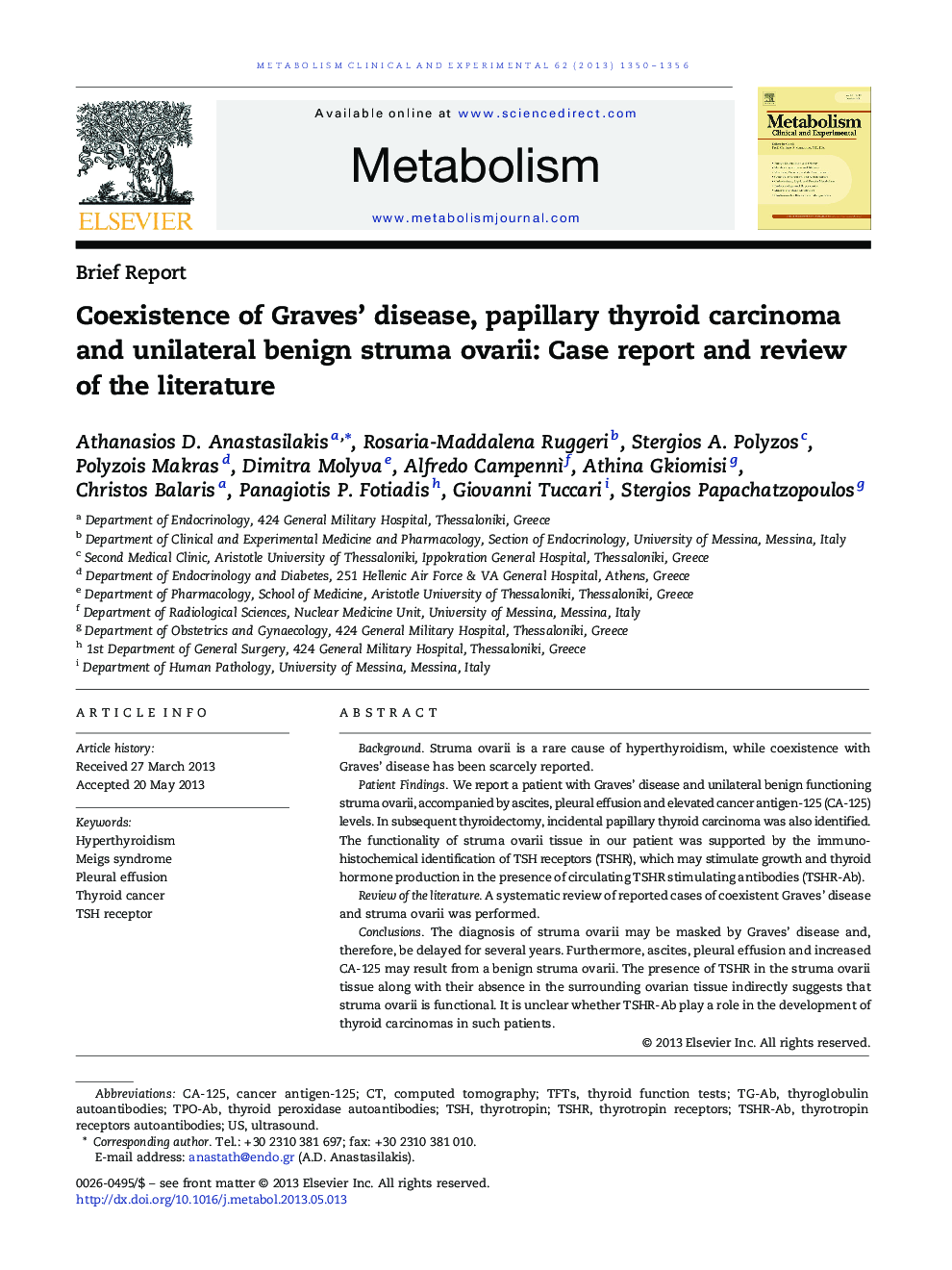| Article ID | Journal | Published Year | Pages | File Type |
|---|---|---|---|---|
| 2805909 | Metabolism | 2013 | 7 Pages |
BackgroundStruma ovarii is a rare cause of hyperthyroidism, while coexistence with Graves’ disease has been scarcely reported.Patient FindingsWe report a patient with Graves’ disease and unilateral benign functioning struma ovarii, accompanied by ascites, pleural effusion and elevated cancer antigen-125 (CA-125) levels. In subsequent thyroidectomy, incidental papillary thyroid carcinoma was also identified. The functionality of struma ovarii tissue in our patient was supported by the immunohistochemical identification of TSH receptors (TSHR), which may stimulate growth and thyroid hormone production in the presence of circulating TSHR stimulating antibodies (TSHR-Ab).Review of the literatureA systematic review of reported cases of coexistent Graves’ disease and struma ovarii was performed.ConclusionsThe diagnosis of struma ovarii may be masked by Graves’ disease and, therefore, be delayed for several years. Furthermore, ascites, pleural effusion and increased CA-125 may result from a benign struma ovarii. The presence of TSHR in the struma ovarii tissue along with their absence in the surrounding ovarian tissue indirectly suggests that struma ovarii is functional. It is unclear whether TSHR-Ab play a role in the development of thyroid carcinomas in such patients.
